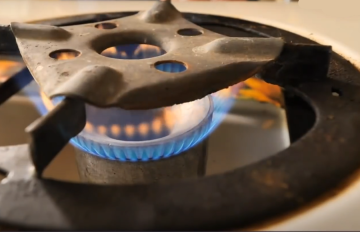Starting January 1, 2025, a recalculation of gas delivery payments has been implemented in Ukraine – the changes affect all consumers, and in some instances, they may be higher.
This applies to those who have increased their gas consumption from October 2023 to September 2024 compared to the same period in 2021/2022.

Even if you do not consume gas but are connected to the gas network, you will still need to pay for gas delivery. Failure to pay this bill voluntarily may result in account seizures.
The cost of gas delivery is calculated monthly, even if you do not consume gas. This is based on the average monthly consumption multiplied by your gas distribution network operator's (GRM) tariff. The delivery tariff depends on various factors, including the length of the network, the number of subscribers, the condition of the equipment, and wage levels.
For example, gas delivery tariffs in Poltava region differ significantly between the cities of Kremenchuk and Hadyach. Although the planned capacity in Kremenchuk is nearly 14 times greater than in Hadyach, the cost for Kremenchukgaz is 3.7 times higher than that of Hadyachgaz. Consequently, the gas delivery tariff in Kremenchuk is 0.552 UAH per cubic meter, while in Hadyach, it is 2.388 UAH. Thus, gas delivery in Hadyach is 4.3 times more expensive.

The volume of gas consumption used for calculating the delivery fee is considered over the gas year (from October to September). For example, this year, the fee will be calculated based on the volumes consumed from October 2023 to September 2024.
There are two main scenarios in which you might overpay for gas delivery. The first is if you do not consume gas but remain connected to the network. In this case, you will only be charged when connected. To avoid unnecessary costs, you should contact the gas distribution network operator to request disconnection.
The second scenario is when you do not submit the readings of your gas meter. In this case, the operator may calculate the delivery based on average figures, which often leads to significant overcharges compared to actual consumption.
Source: OBOZ.UA.